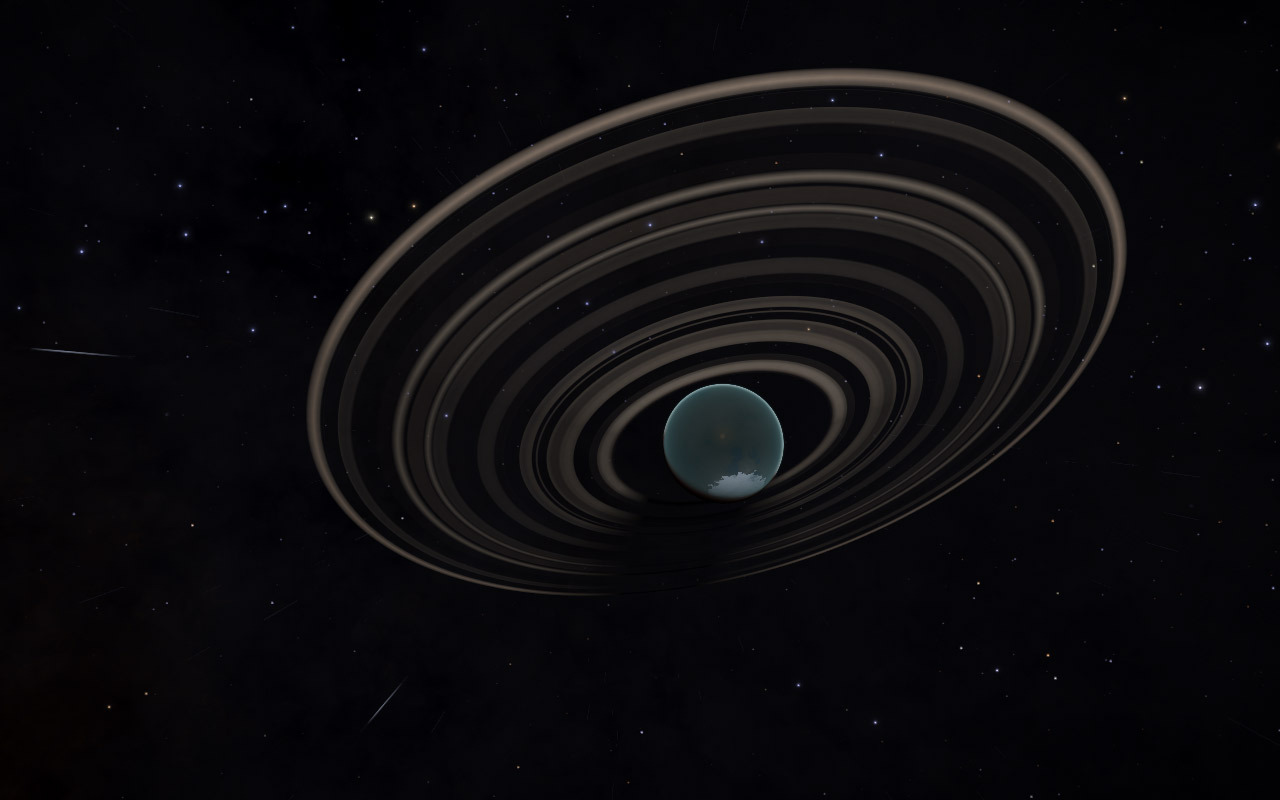
A procedurally generated earth-like planet with rings from Elite: Dangerous
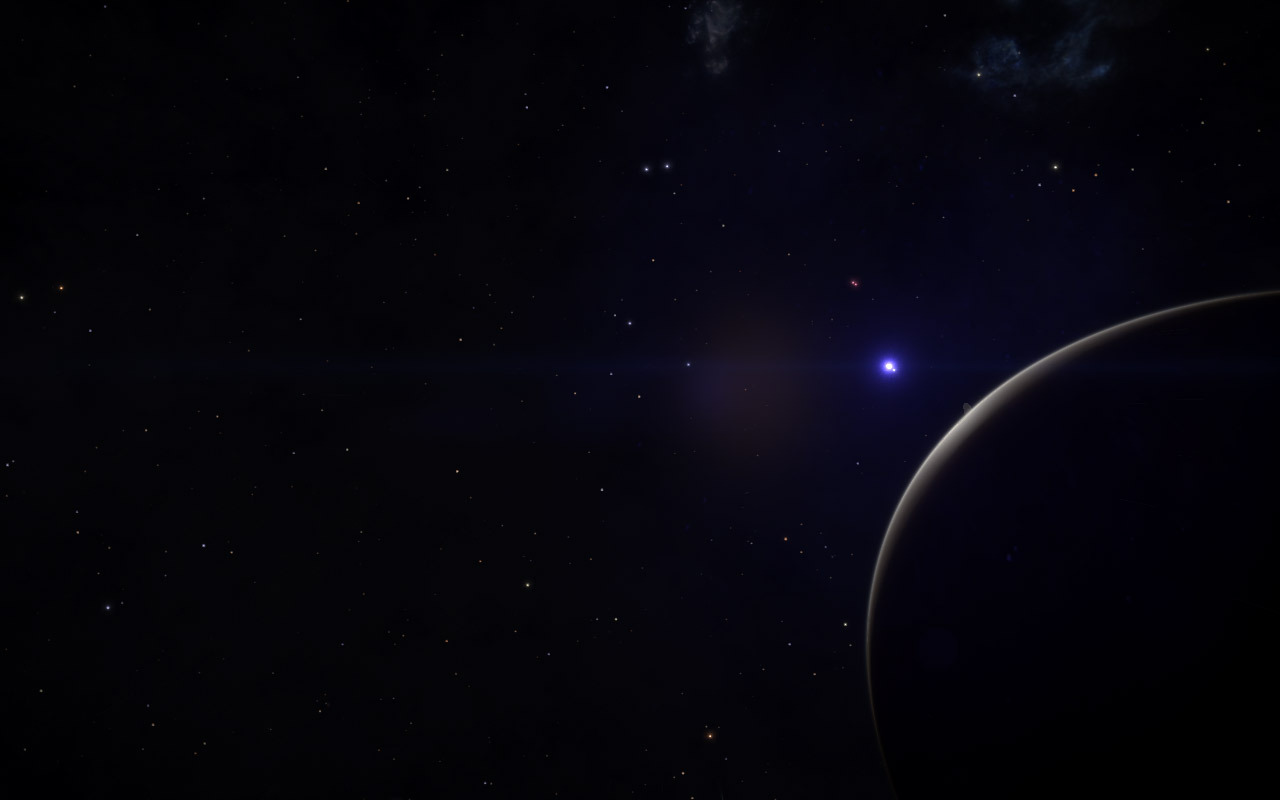
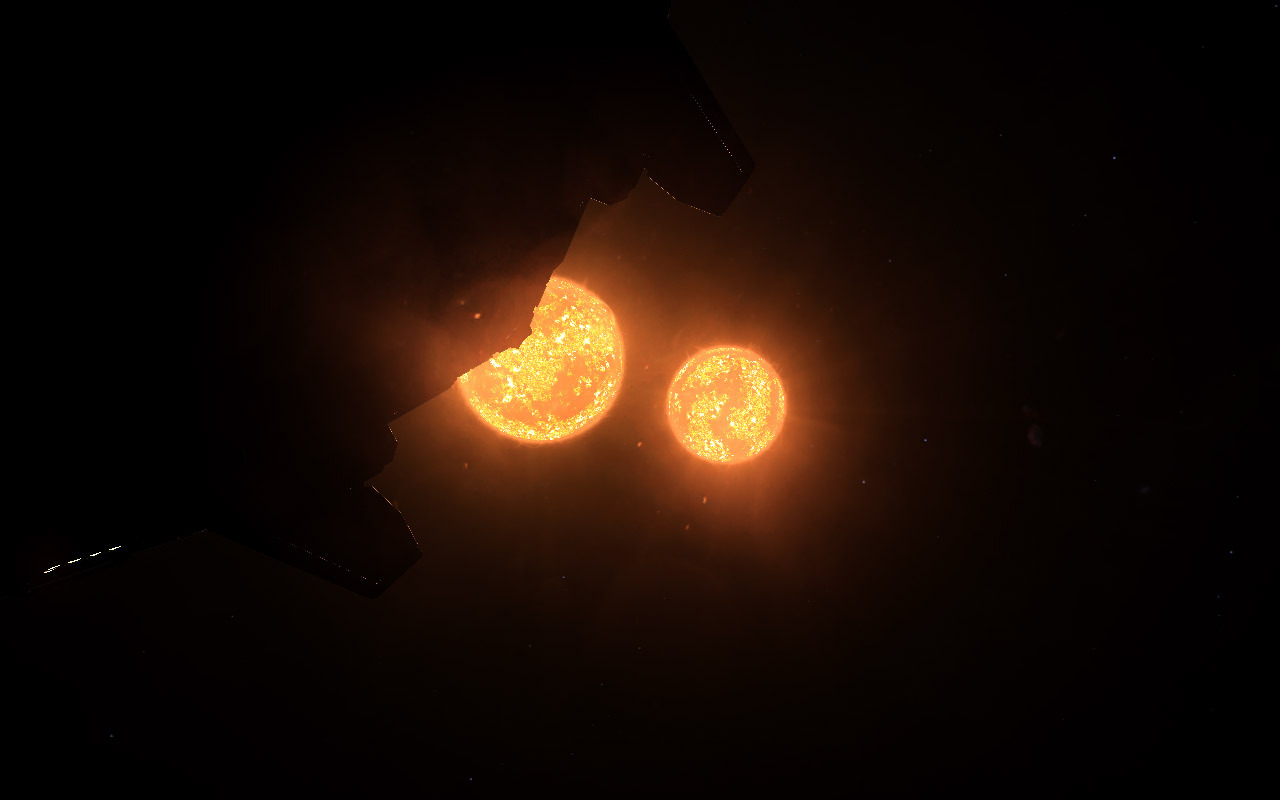
Binary star system in Elite: Dangerous
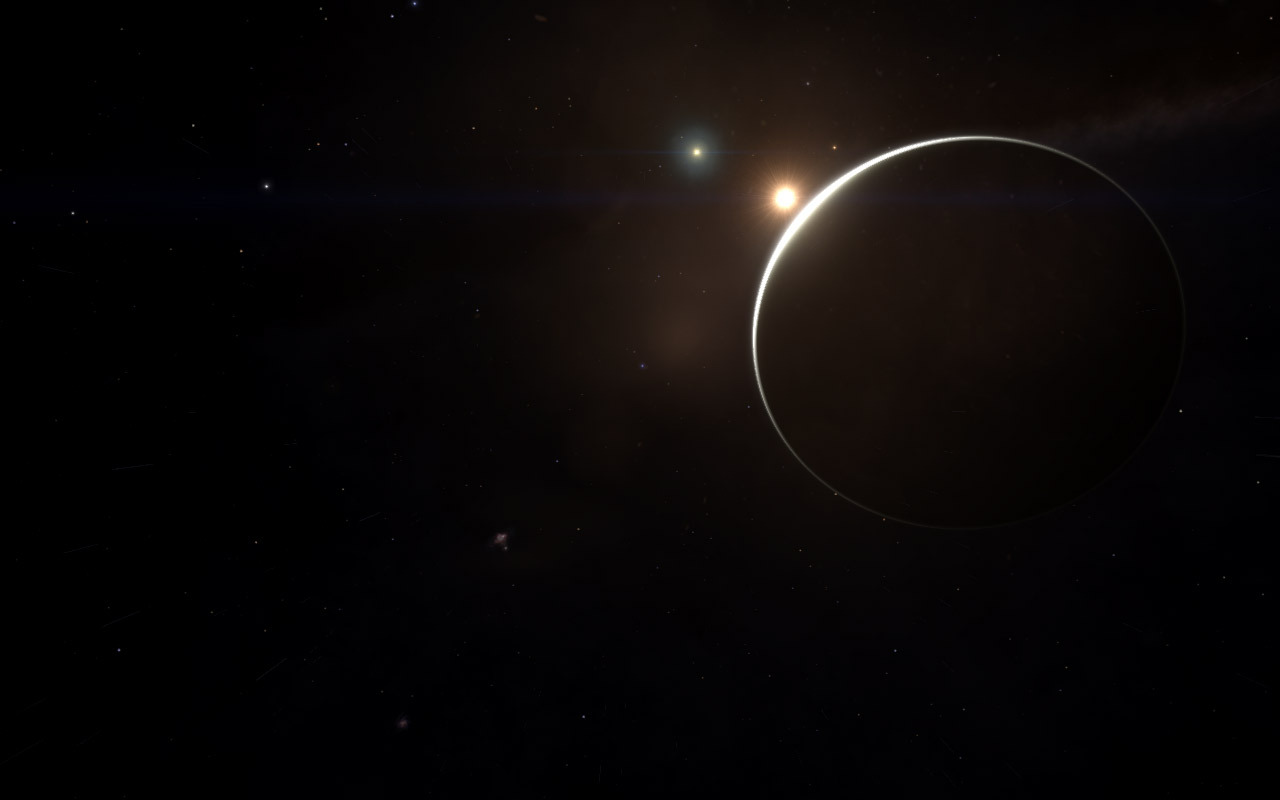
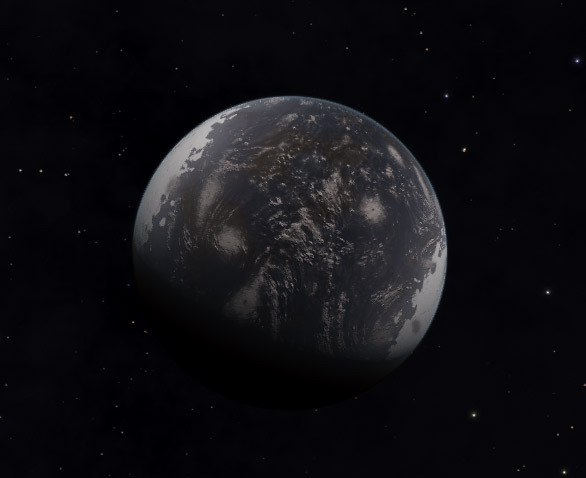
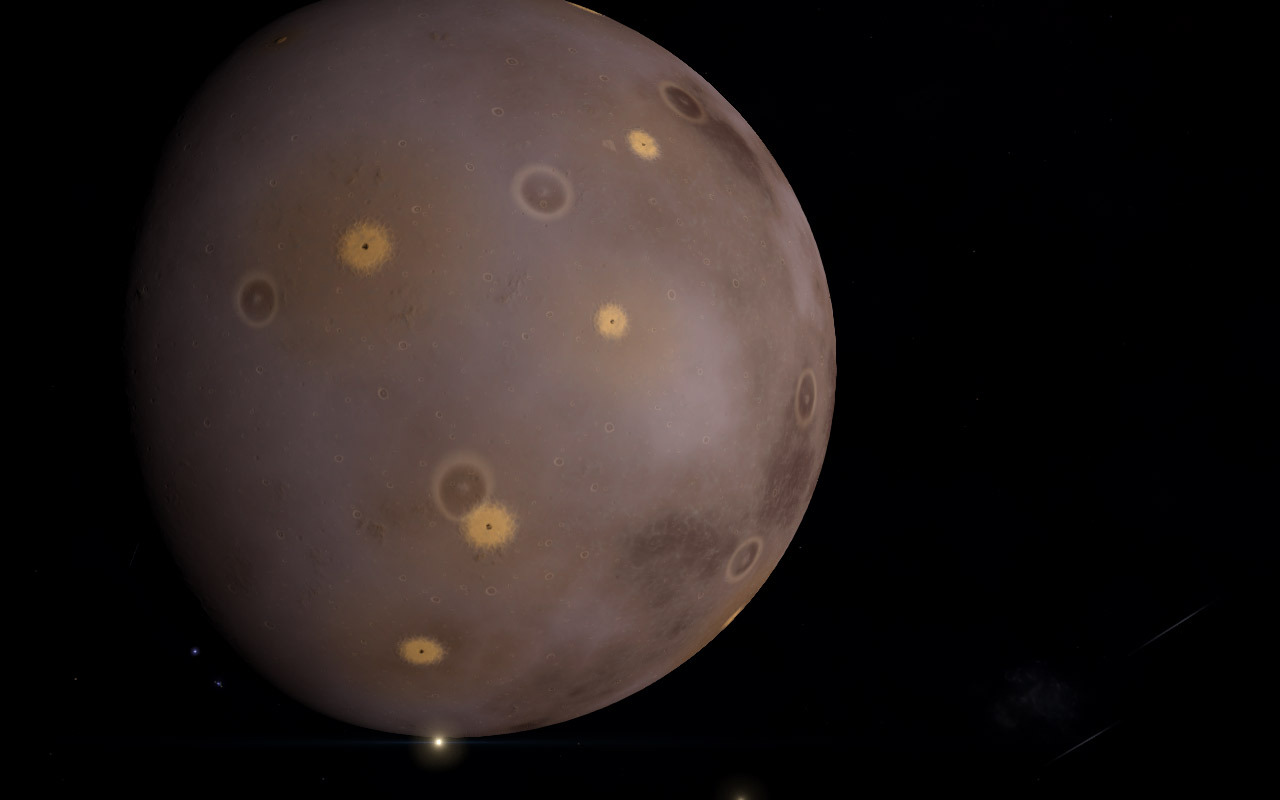
Notice the crater patterns
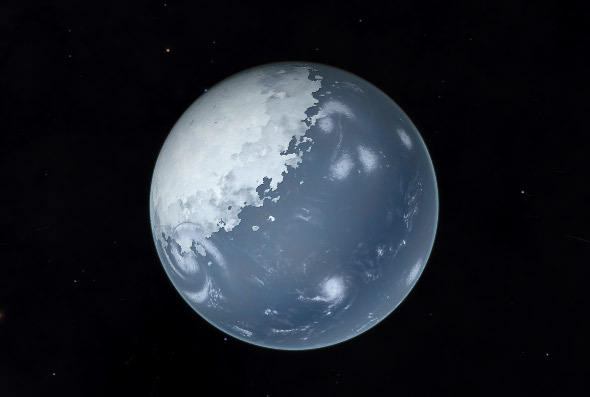
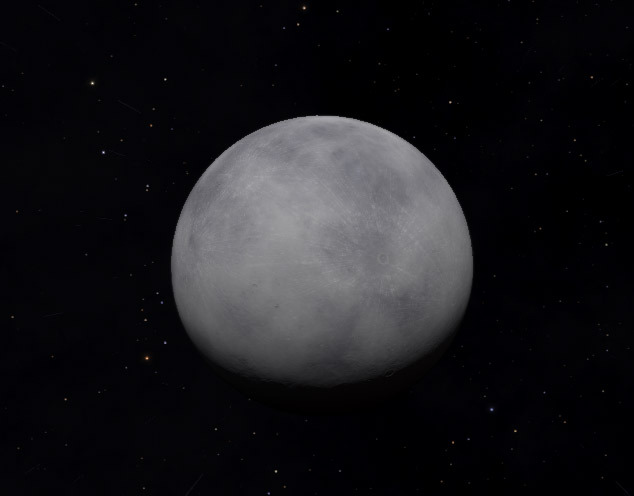
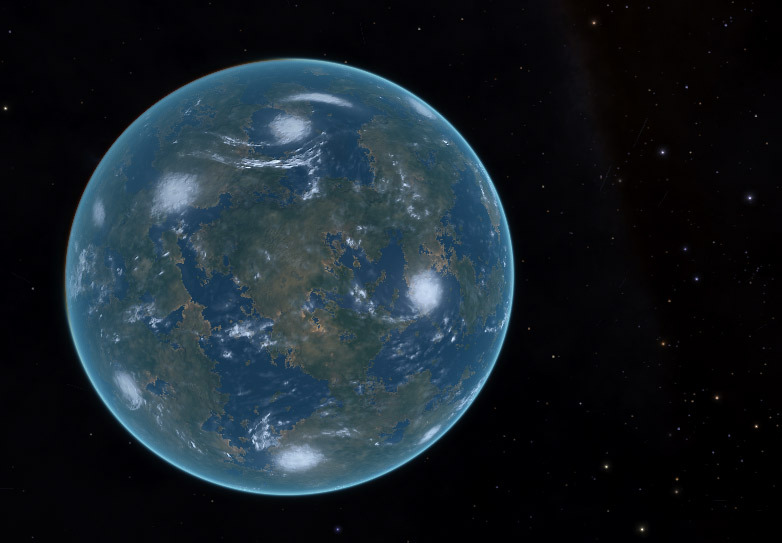
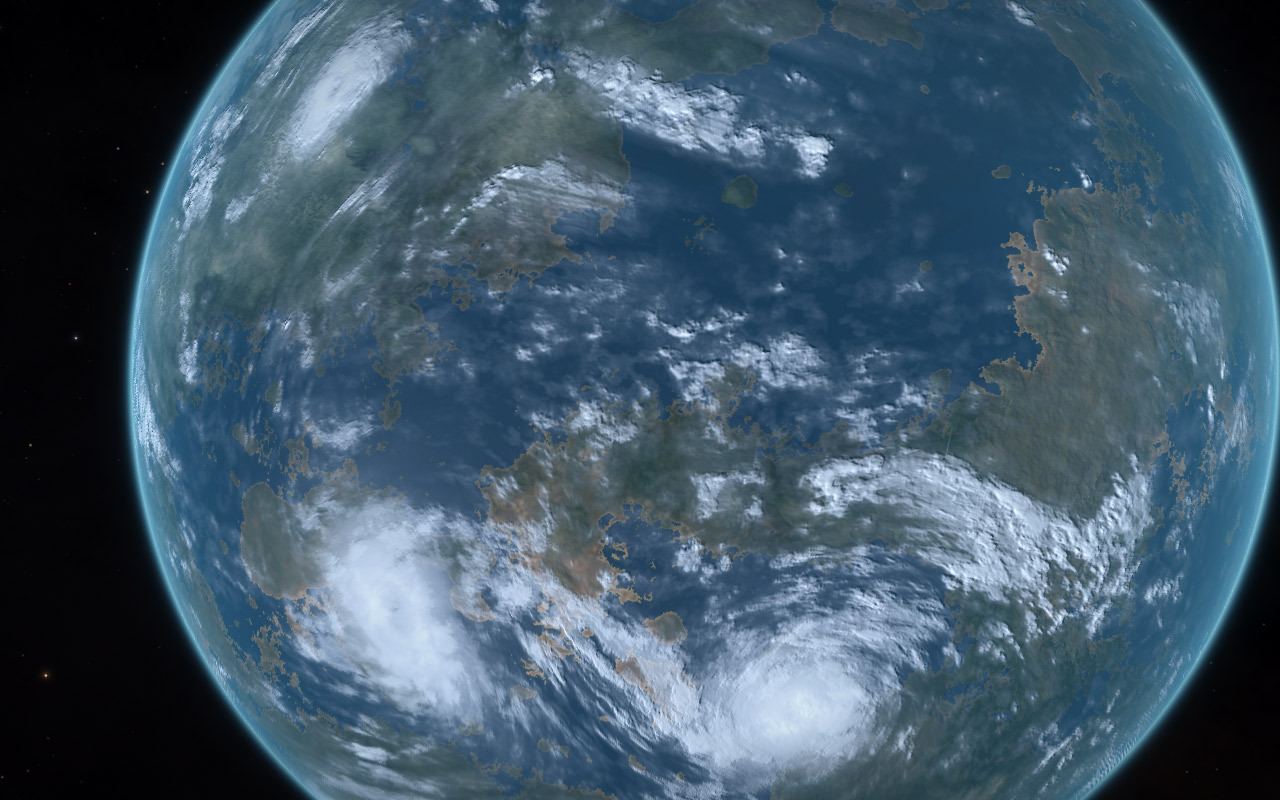
Elite: Dangerous (2014) - Planet Generation
Previous Elite games used a statistical approach to generating solar systems, essentially rolling dice on tables of numbers that lined up with the observed statistics for stars and the hypothesized statistics for planetary distribution. This is a tried-and-tested approach to generating content. But Elite: Dangerous chose a different path.
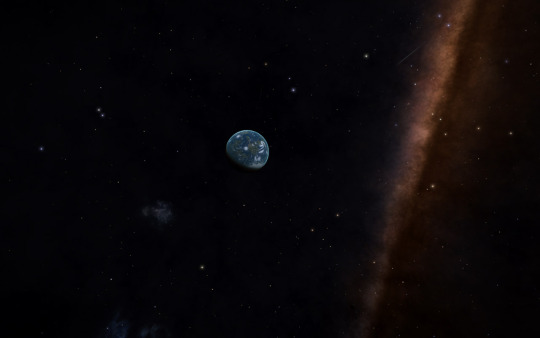
You’ll hear the developers talk about something they call “Stellar Forge,” which is a simulation of planetary formation, starting from nebulous gases and gradually accreting into stars and planets.

Frontier: Elite 2 used a 2D top-down image of the galaxy to approximate stellar density, so it knew how many systems to generate per sector, and Elite Dangerous appears to do something similar, only expanded into three dimensions and with more detail. The vast majority of the 400,000,000,000 star systems in the galaxy are placed this way, simply because of the limitations of current astronomical observations.

For the stars that we do have data for, the developers used the information in the Hipparcos and other stellar catalogues. These can be searched in-game with their catalog numbers (which are also listed in the system view). Known exoplanets are also included.

The planets Stellar Forge creates are based on the outcome of the simulation. The distance from the star, the temperature, the amount of mass, and so on go into what the final result will look like. And it’s not just generating heightmaps from noise: the game runs tectonic simulations and models other processes to create the features of the world. The craters formed on the planet reflect the impacts from the Stellar Forge simulation of the formation of the system.

There’s a ton of detail hidden on these planets right now, which is why it’s a pity that player interaction with the planets is somewhat limited at the moment. Players automatically drop out of hyperspace when they get too close to a planet, and they’re not yet allowed to land.
So most of the interaction that players have with planets is indirect. Some planets are more valuable to discover than others, and the kinds of planets in a system will have a major impact on the local economy. But until landing on planets is added to the game, the variation in the planets is mostly cosmetic.

Which is not to say that the variation is useless. Having every planet unique, varied, and reflecting the history of the star system contributes to the feeling of a cohesive universe. The material presentation of a game–its narrative and the explanation that it gives for itself– is a crucial and undervalued bridge between the player and the form of the systems running beneath the hood.

Still, I imagine that many of the players are looking forward to the next season of content for the game, which includes the first round of planetary landings.
